Number of Tibetan antelopes rises to over 200,000 at Changtang in Tibet
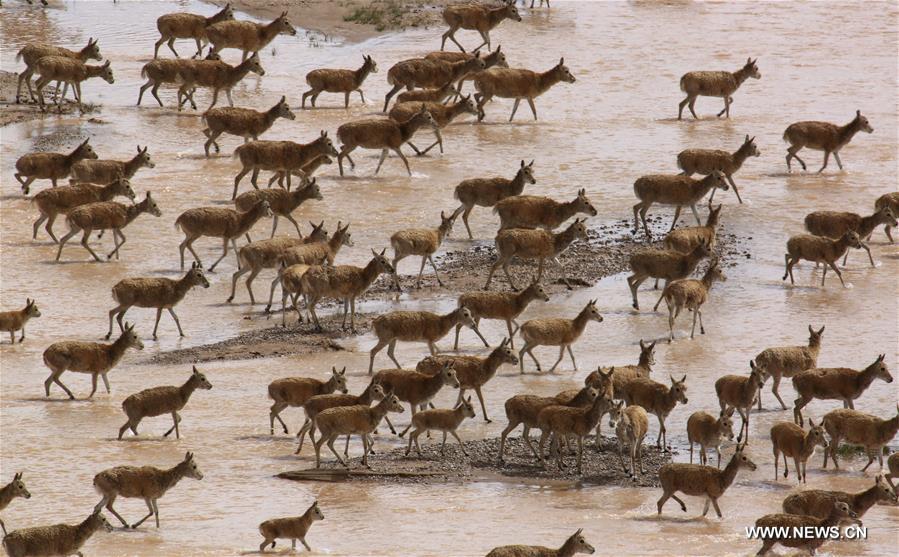
A herd of Tibetan antelope ewes migrate to breeding area at Changtang National Nature Reserve in southwest China's Tibet Autonomous Region, June 24, 2017. It is breeding season of Tibetan antelopes at Changtang. There are over 3,000 ewes awaiting delivery or just delivered simply at the reserve in Qiuka region of Xainza County. The total number of Tibetan antelopes has risen to more than 200,000 at Changtang. With an area of 298,000 square km and an average altitude of 5,000 meters, Changtang is China's biggest and highest reserve. The area is located in northern Tibet where few humans reside, however, it is a wildlife paradise, and home to a variety of wildlife species and numerous lakes. More than 40 species of rare wild animals including Tibetan antelopes, Tibetan wild donkeys, Tibetan yaks and black-necked cranes living in the region. [Photo/Xinhua]

A Tibetan antelope ewe takes a lamb to walk on the grassland at Changtang National Nature Reserve in southwest China's Tibet Autonomous Region, June 24, 2017. It is breeding season of Tibetan antelopes at Changtang. There are over 3,000 ewes awaiting delivery or just delivered simply at the reserve in Qiuka region of Xainza County. The total number of Tibetan antelopes has risen to more than 200,000 at Changtang. With an area of 298,000 square km and an average altitude of 5,000 meters, Changtang is China's biggest and highest reserve. The area is located in northern Tibet where few humans reside, however, it is a wildlife paradise, and home to a variety of wildlife species and numerous lakes. More than 40 species of rare wild animals including Tibetan antelopes, Tibetan wild donkeys, Tibetan yaks and black-necked cranes living in the region. [Photo/Xinhua]
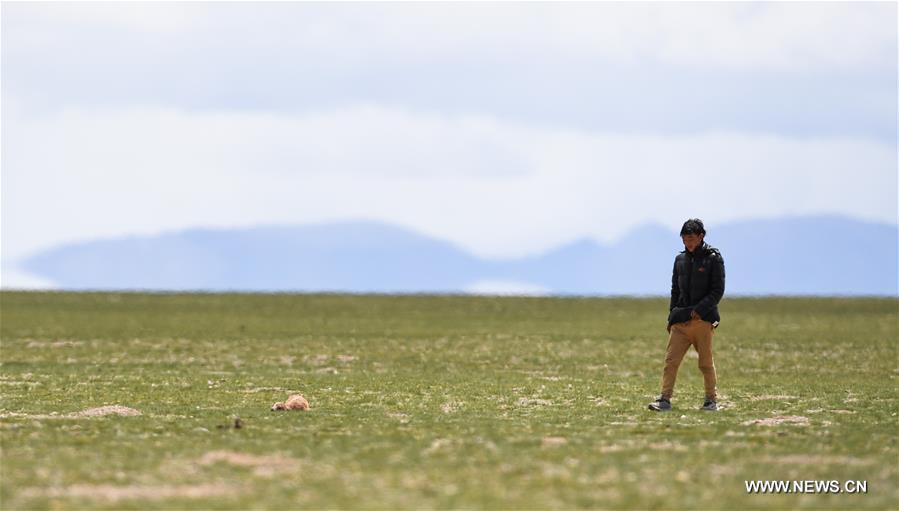
A wild animal protector walks towards an injured Tibetan antelope lamb at Changtang National Nature Reserve in southwest China's Tibet Autonomous Region, June 24, 2017. It is breeding season of Tibetan antelopes at Changtang. There are over 3,000 ewes awaiting delivery or just delivered simply at the reserve in Qiuka region of Xainza County. The total number of Tibetan antelopes has risen to more than 200,000 at Changtang. With an area of 298,000 square km and an average altitude of 5,000 meters, Changtang is China's biggest and highest reserve. The area is located in northern Tibet where few humans reside, however, it is a wildlife paradise, and home to a variety of wildlife species and numerous lakes. More than 40 species of rare wild animals including Tibetan antelopes, Tibetan wild donkeys, Tibetan yaks and black-necked cranes living in the region. [Photo/Xinhua]
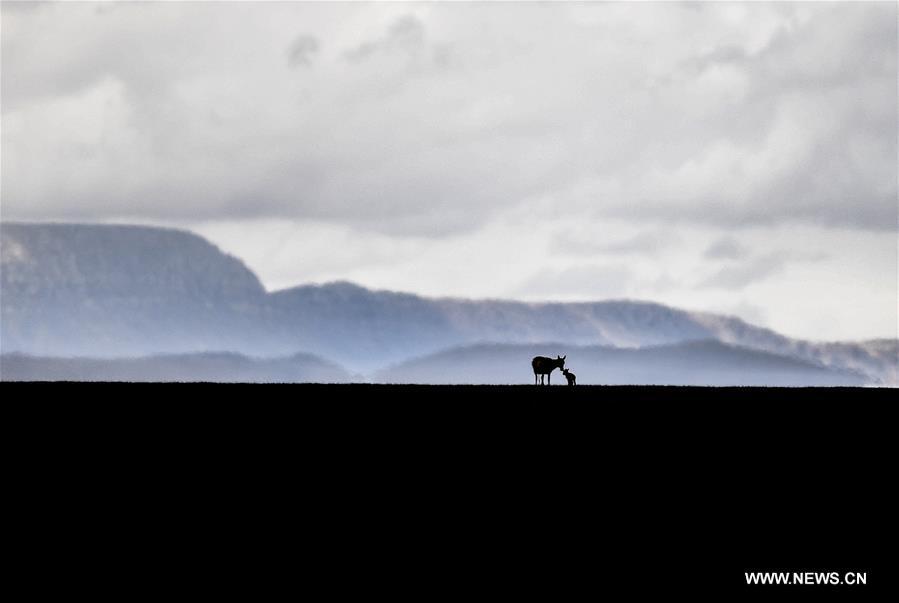
A Tibetan antelope ewe stays with a lamb at Changtang National Nature Reserve in southwest China's Tibet Autonomous Region, June 24, 2017. It is breeding season of Tibetan antelopes at Changtang. There are over 3,000 ewes awaiting delivery or just delivered simply at the reserve in Qiuka region of Xainza County. The total number of Tibetan antelopes has risen to more than 200,000 at Changtang. With an area of 298,000 square km and an average altitude of 5,000 meters, Changtang is China's biggest and highest reserve. The area is located in northern Tibet where few humans reside, however, it is a wildlife paradise, and home to a variety of wildlife species and numerous lakes. More than 40 species of rare wild animals including Tibetan antelopes, Tibetan wild donkeys, Tibetan yaks and black-necked cranes living in the region. [Photo/Xinhua]
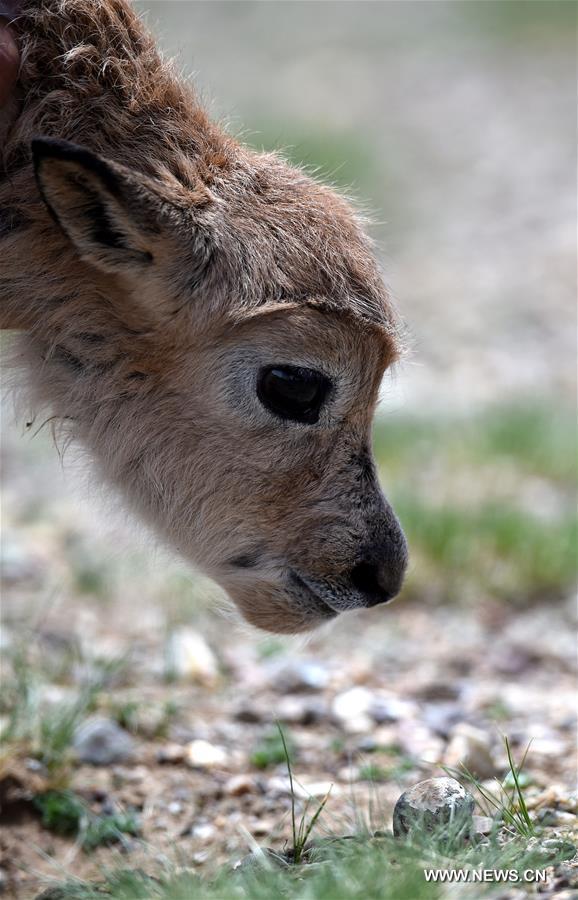
A newly-born Tibetan antelope lamb tries to stand steady at Changtang National Nature Reserve in southwest China's Tibet Autonomous Region, June 24, 2017. It is breeding season of Tibetan antelopes at Changtang. There are over 3,000 ewes awaiting delivery or just delivered simply at the reserve in Qiuka region of Xainza County. The total number of Tibetan antelopes has risen to more than 200,000 at Changtang. With an area of 298,000 square km and an average altitude of 5,000 meters, Changtang is China's biggest and highest reserve. The area is located in northern Tibet where few humans reside, however, it is a wildlife paradise, and home to a variety of wildlife species and numerous lakes. More than 40 species of rare wild animals including Tibetan antelopes, Tibetan wild donkeys, Tibetan yaks and black-necked cranes living in the region. [Photo/Xinhua]
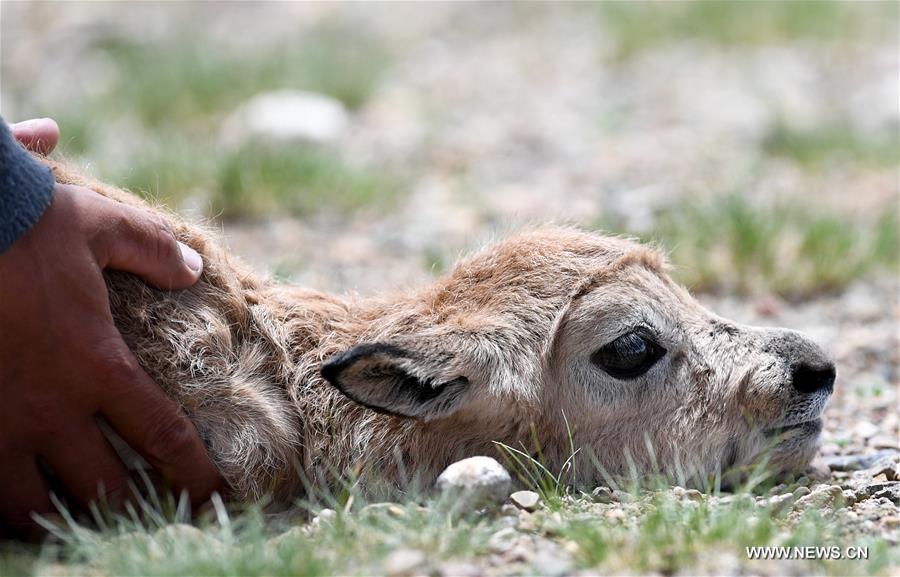
An injured Tibetan antelope lamb is attended to by a protector at Changtang National Nature Reserve in southwest China's Tibet Autonomous Region, June 24, 2017. It is breeding season of Tibetan antelopes at Changtang. There are over 3,000 ewes awaiting delivery or just delivered simply at the reserve in Qiuka region of Xainza County. The total number of Tibetan antelopes has risen to more than 200,000 at Changtang. With an area of 298,000 square km and an average altitude of 5,000 meters, Changtang is China's biggest and highest reserve. The area is located in northern Tibet where few humans reside, however, it is a wildlife paradise, and home to a variety of wildlife species and numerous lakes. More than 40 species of rare wild animals including Tibetan antelopes, Tibetan wild donkeys, Tibetan yaks and black-necked cranes living in the region. [Photo/Xinhua]
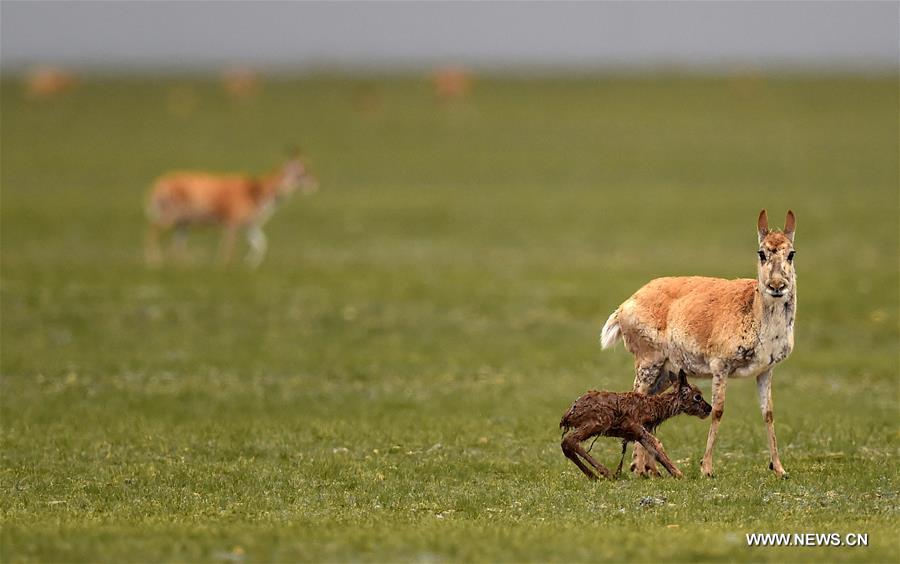
A Tibetan antelope ewe stays with a newly-born lamb at Changtang National Nature Reserve in southwest China's Tibet Autonomous Region, June 24, 2017. It is breeding season of Tibetan antelopes at Changtang. There are over 3,000 ewes awaiting delivery or just delivered simply at the reserve in Qiuka region of Xainza County. The total number of Tibetan antelopes has risen to more than 200,000 at Changtang. With an area of 298,000 square km and an average altitude of 5,000 meters, Changtang is China's biggest and highest reserve. The area is located in northern Tibet where few humans reside, however, it is a wildlife paradise, and home to a variety of wildlife species and numerous lakes. More than 40 species of rare wild animals including Tibetan antelopes, Tibetan wild donkeys, Tibetan yaks and black-necked cranes living in the region. [Photo/Xinhua]
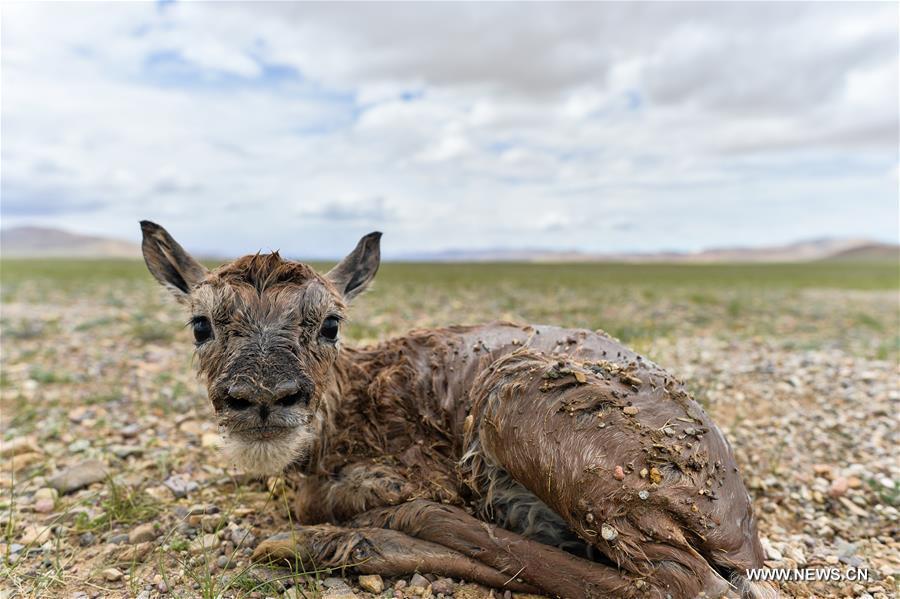
A newly-born Tibetan antelope lamb stays at Changtang National Nature Reserve in southwest China's Tibet Autonomous Region, June 24, 2017. It is breeding season of Tibetan antelopes at Changtang. There are over 3,000 ewes awaiting delivery or just delivered simply at the reserve in Qiuka region of Xainza County. The total number of Tibetan antelopes has risen to more than 200,000 at Changtang. With an area of 298,000 square km and an average altitude of 5,000 meters, Changtang is China's biggest and highest reserve. The area is located in northern Tibet where few humans reside, however, it is a wildlife paradise, and home to a variety of wildlife species and numerous lakes. More than 40 species of rare wild animals including Tibetan antelopes, Tibetan wild donkeys, Tibetan yaks and black-necked cranes living in the region[Photo/Xinhua]
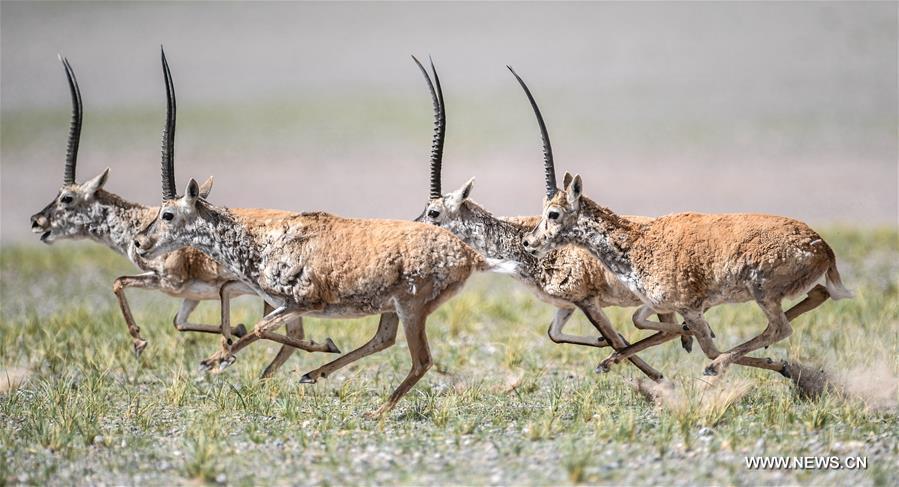
Tibetan antelope rams run at Changtang National Nature Reserve in southwest China's Tibet Autonomous Region, June 25, 2017. It is breeding season of Tibetan antelopes at Changtang. There are over 3,000 ewes awaiting delivery or just delivered simply at the reserve in Qiuka region of Xainza County. The total number of Tibetan antelopes has risen to more than 200,000 at Changtang. With an area of 298,000 square km and an average altitude of 5,000 meters, Changtang is China's biggest and highest reserve. The area is located in northern Tibet where few humans reside, however, it is a wildlife paradise, and home to a variety of wildlife species and numerous lakes. More than 40 species of rare wild animals including Tibetan antelopes, Tibetan wild donkeys, Tibetan yaks and black-necked cranes living in the region. [Photo/Xinhua]

A Tibetan antelope is seen at Changtang National Nature Reserve in southwest China's Tibet Autonomous Region, June 24, 2017. It is breeding season of Tibetan antelopes at Changtang. There are over 3,000 ewes awaiting delivery or just delivered simply at the reserve in Qiuka region of Xainza County. The total number of Tibetan antelopes has risen to more than 200,000 at Changtang. With an area of 298,000 square km and an average altitude of 5,000 meters, Changtang is China's biggest and highest reserve. The area is located in northern Tibet where few humans reside, however, it is a wildlife paradise, and home to a variety of wildlife species and numerous lakes. More than 40 species of rare wild animals including Tibetan antelopes, Tibetan wild donkeys, Tibetan yaks and black-necked cranes living in the region. [Photo/Xinhua]
Your Comment
Name E-mailRelated News
More >>-
;
-
-
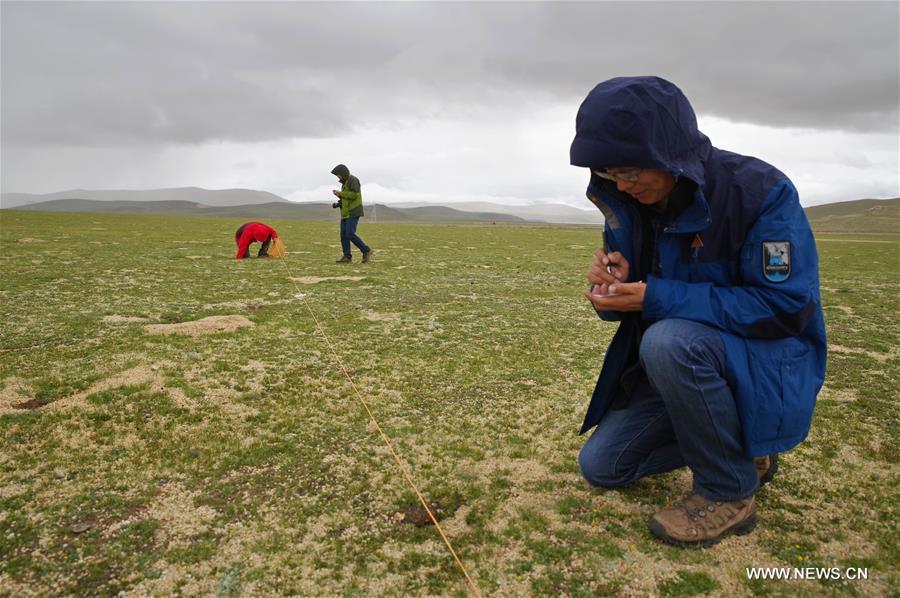
-
Scientists conduct scientific expedition to Qingha
China began its second scientific expedition to the Qinghai-Tibet Plateau to study changes in climate, biodiversity and environment over the past decades.
-
-
-
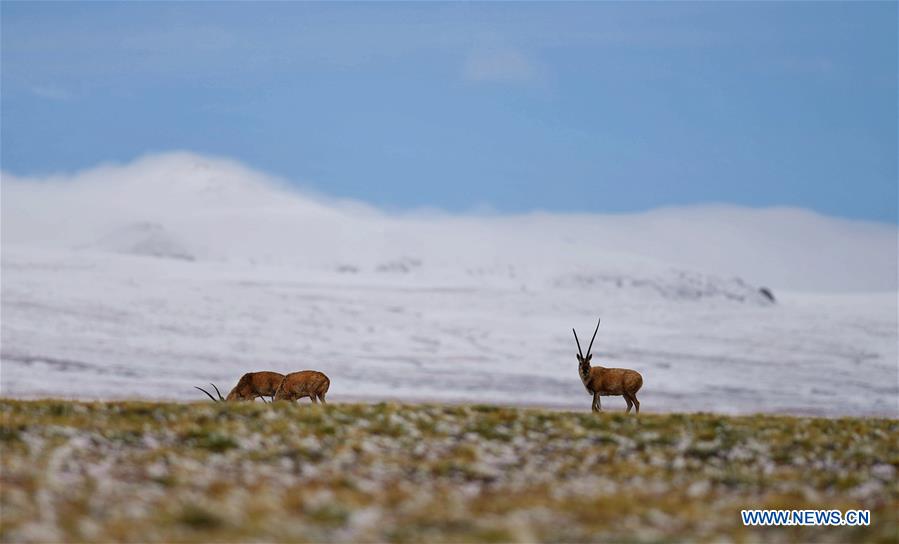
-
Scientists conduct comprehensive scientific expedi
Scientists conducted a comprehensive scientific expedition on the Qinghai-Tibet Plateau.
-
-
-
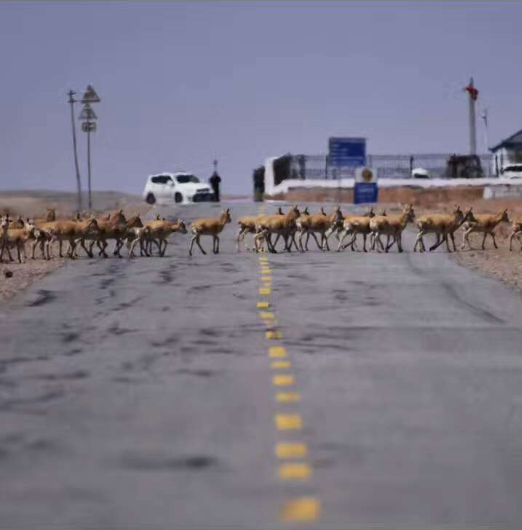
-
Tibetan antelopes begin migration
The antelopes begin their migration each year from the end of April to early June, when Changthang is in its most beautiful time and food is most abundant.
-

